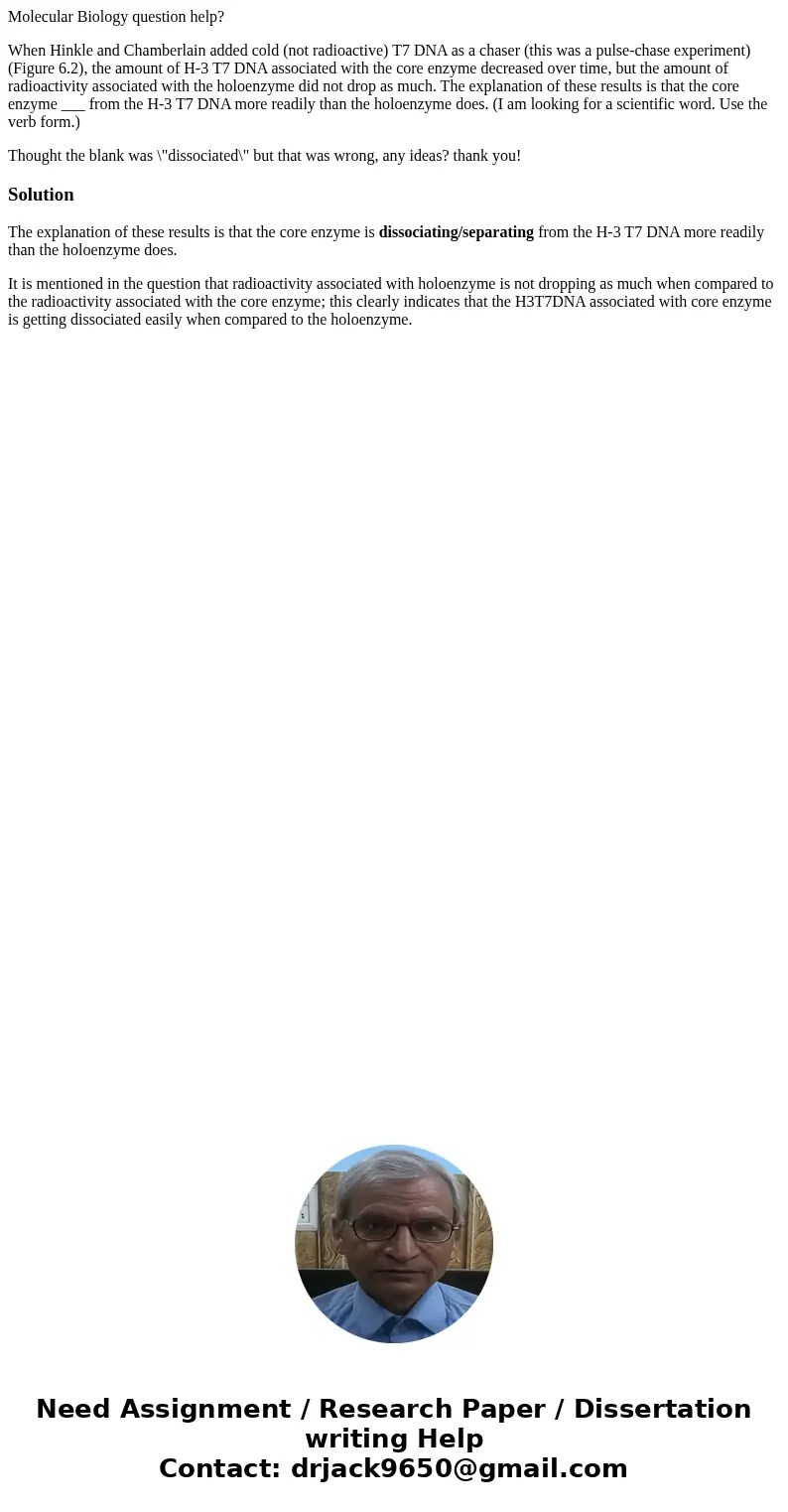Molecular Biology question help When Hinkle and Chamberlain
Molecular Biology question help?
When Hinkle and Chamberlain added cold (not radioactive) T7 DNA as a chaser (this was a pulse-chase experiment) (Figure 6.2), the amount of H-3 T7 DNA associated with the core enzyme decreased over time, but the amount of radioactivity associated with the holoenzyme did not drop as much. The explanation of these results is that the core enzyme ___ from the H-3 T7 DNA more readily than the holoenzyme does. (I am looking for a scientific word. Use the verb form.)
Thought the blank was \"dissociated\" but that was wrong, any ideas? thank you!
Solution
The explanation of these results is that the core enzyme is dissociating/separating from the H-3 T7 DNA more readily than the holoenzyme does.
It is mentioned in the question that radioactivity associated with holoenzyme is not dropping as much when compared to the radioactivity associated with the core enzyme; this clearly indicates that the H3T7DNA associated with core enzyme is getting dissociated easily when compared to the holoenzyme.

 Homework Sourse
Homework Sourse